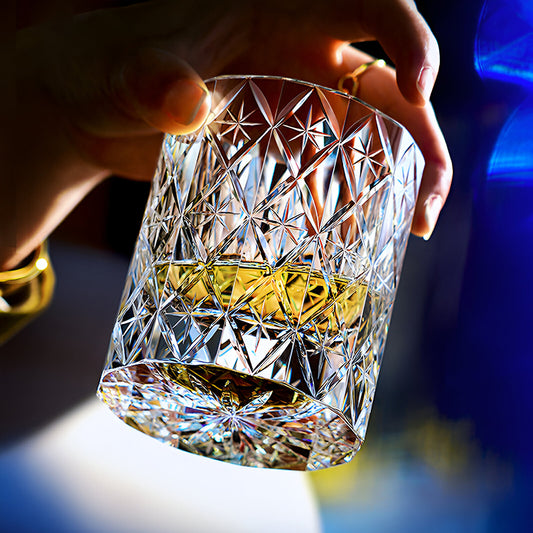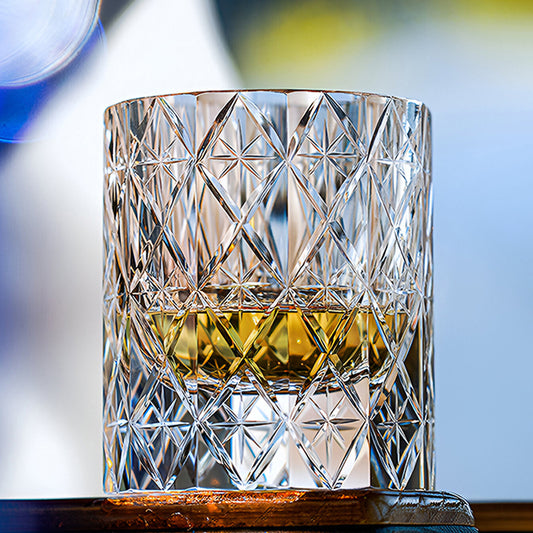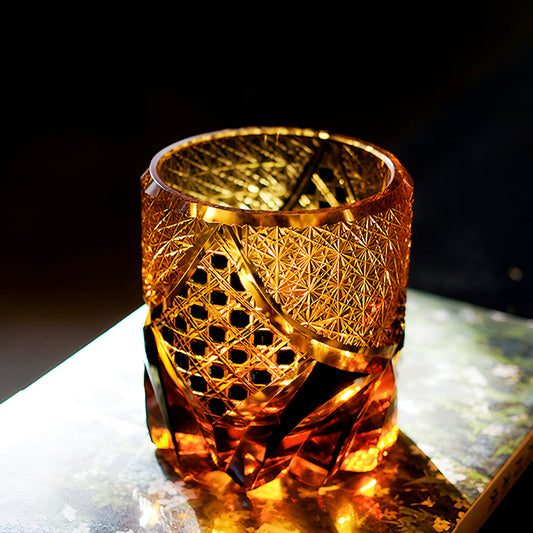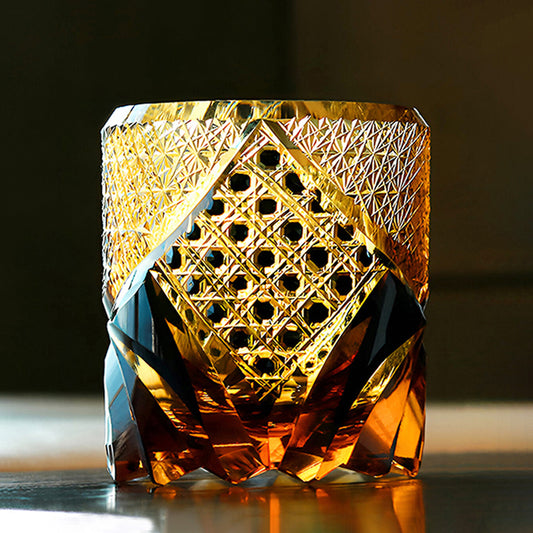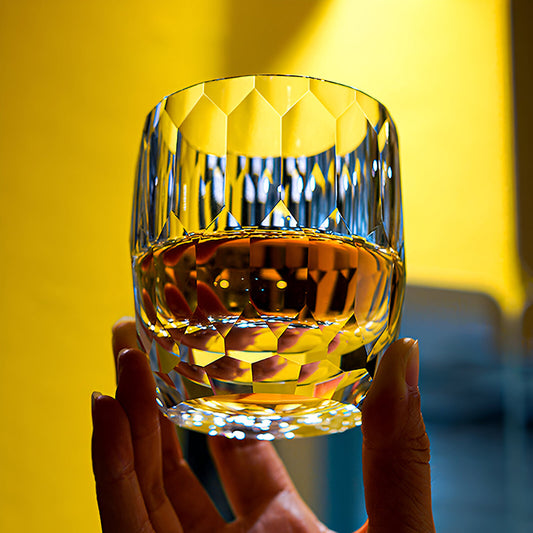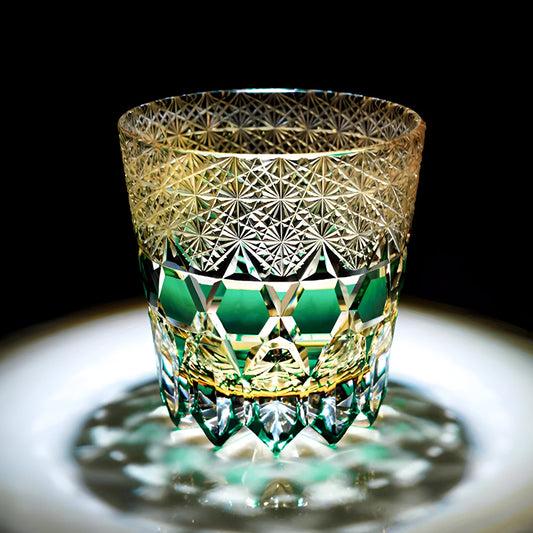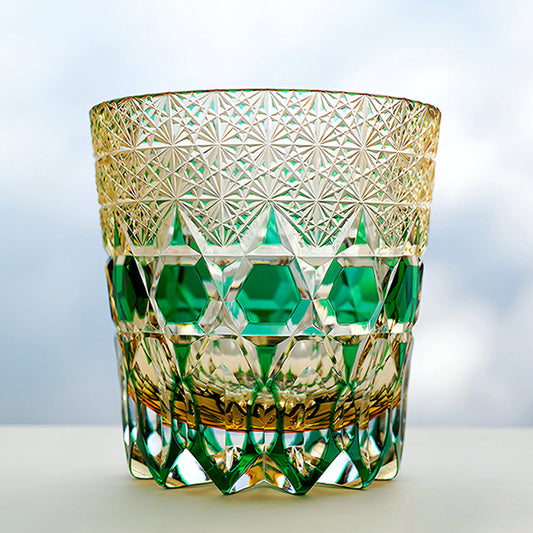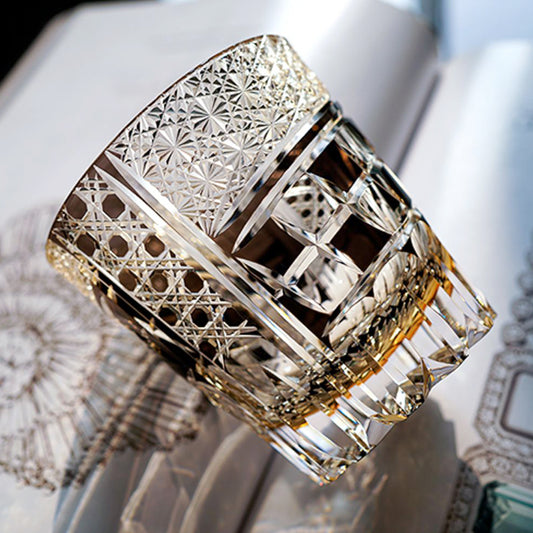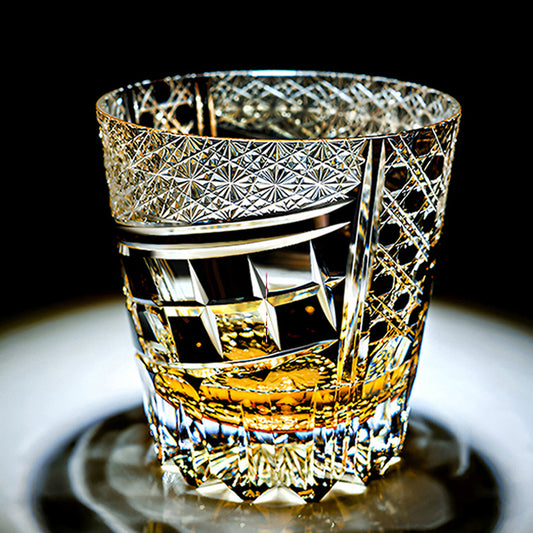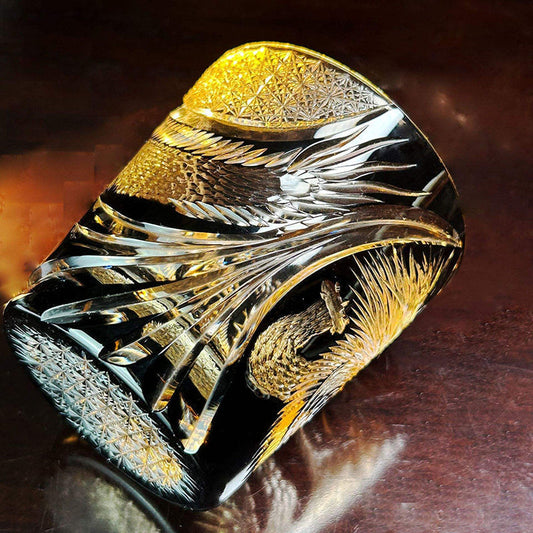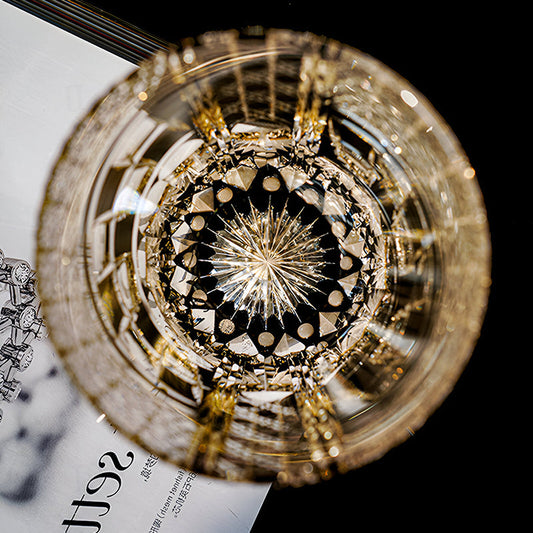Many Glass are made by sandwiching a semi-soft glass surface with a multi-part mold to emboss the texture. Molded cups are good at simplifying complexity through molds, and each costs only a few dollars or a dozen dollars, however, their surface patterns are still relatively rounded and lack clear edges. Think of a wine bottle or a glass Coke bottle - they all use the same technology.
Whiskey Glass, priced from hundreds to thousands at today's rates, represent premium craftsmanship. Unlike mold-pressed methods, these employ cold-cutting techniques where 'dancing blades create interplay of light and shadow.' As the term suggests, every groove is hand-cut and polished – a testament to labor intensity and near-zero error tolerance.
Cold-cutting technique
craftsmanship, known as lengqie gongyi in China, is famously referred to as Edo Kiriko in Japan. Originating from European glass engraving techniques adopted during the late Edo period (around 200 years ago), it gradually evolved a distinct aesthetic system rooted in Japanese sensibilities.
Laying Guide Lines
Let’s break down the production process to understand its premium value. Before cutting begins, artisans meticulously mark geometric patterns on the glass surface. Vertical lines are scribed using a fixed pivot point, ensuring precision alignment – a step where hand-drawn templates separate artisanal craftsmanship from mass production.

Rotating the bottom of the cup, a circle with horizontal lines has been drawn.

Only the diagonal lines purely depend on the skill, after all, the glass surface has curvature.

Rough Cutting Process
The rough cutting process involves shining a light on the outside of the glass for easy observation of the depth of the glass cuts. Transparent production facilitates inspection, which is also quite common in our manufacturing industry, such as checking whether the seams of table tennis balls are uniform. Using the same grinding wheel, different depths and thicknesses of patterns can be cut, mainly relying on the master's touch. On the blue cup below, a cluster of grass-like patterns has been cut.

Whisky Glass are classic pure transparent styles, but today's Edo Kiriko glasses are mostly made of "layered" glass, combining clear glass with colored glass. The contrast between the exposed layer of clear glass and the retained color on the surface can produce a stunning effect, especially when illuminated, like a kaleidoscope.

Fine Cutting Process
Then comes the exceptionally beautiful fine line engraving, where you can see that as the thumb pushes upward, the grinding wheel on the cup wall cuts a narrow line... Watching it made me physically comfortable, while silently sweating for the operator, knowing that one tremor could undo all the previous work.

Grinding Process
After applying the polishing paste, it finally reached the grinding process without so much fear and trepidation.

Polishing Process
After grinding, it's time for polishing. This is to achieve a level of transparency in the glass that allows light to pass through!

Clean and Inspect
Clean and dry the cut glass thoroughly, then meticulously inspect every detail and quality aspect. This ensures the final product is flawless and meets the required standards.
Finally, we get this dazzling finished product. The brilliant and sparkling effect of Kiriko glass is not only due to the changes in light and shadow created by the meticulous cutting techniques, but also related to the use of high - transparency lead glass. A more elegant name for lead glass is crystal glass. By adding lead to the glass, the refractive index of the glass increases, resulting in a more dazzling refraction, giving it a sense of beautiful danger.
The operation of the Edo Kiriko Glass seems feasible, but the real difficulty lies in the fact that the length, thickness and path of thousands of lines are all under the control of a pair of hands.



